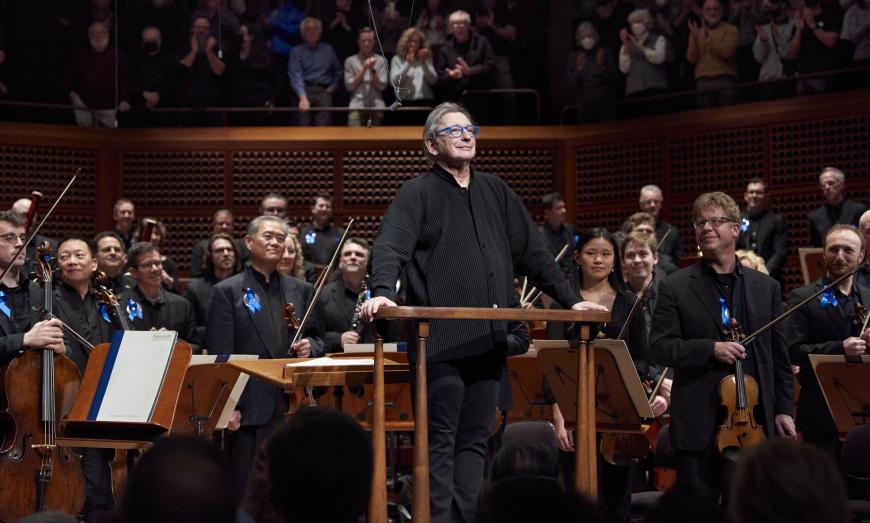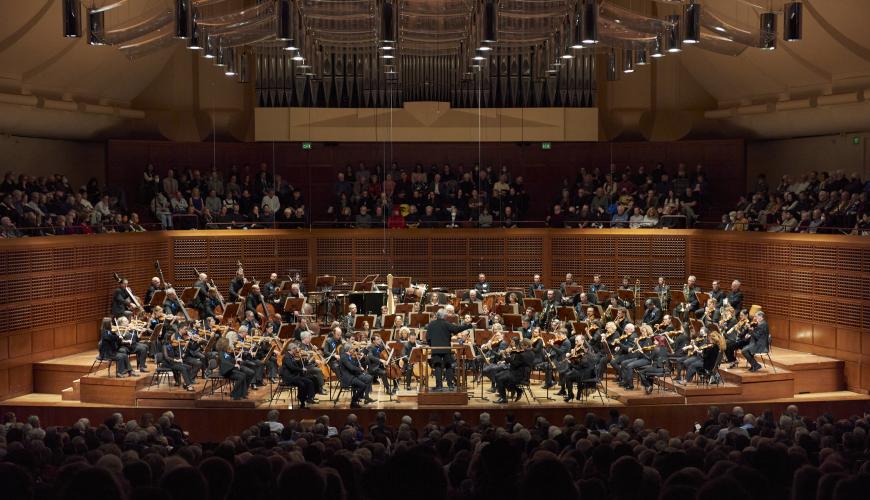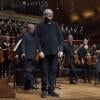
Now that Michael Tilson Thomas’s time with the San Francisco Symphony is coming to an end — amid an ongoing battle with brain cancer, the conductor led what was billed as his final subscription program at Davies Symphony Hall over the weekend — it feels like ages ago that he was here full time. But we have plenty by which to remember his 25-year tenure as music director, not least the award-winning Gustav Mahler recordings he initiated. Counting guest appearances, Tilson Thomas’s history with the SF Symphony goes back to 1974, when he debuted with the orchestra in Mahler’s Ninth Symphony.
How has MTT’s interpretation of Mahler changed? It’s difficult to compare any live performance against the memories — difficult to grade the pacing of any performance of the Fifth Symphony, which is brief by Mahler’s standards but still monumental in scope. The conductor’s approach on Friday was perhaps more measured than it once was. It was certainly slower. But I was happy to stay the extra while in the first movement’s funeral march.

Sotto voce (under the breath) isn’t a marking you see in Mahler, but on Friday, it was easy to imagine it in the score, with angora-soft cymbals and a marvelously hushed string cadence to the otherworldly realm of A minor (a special key for the composer, in this symphony and across his work). Prolonged upbeats characterized the theme with graceful languor, the turns slow and deliberate like single pirouettes.
The two middle movements were variable, however. The second movement’s chorale was magnificent even as it slipped away, but other passages of the music (marked “stormily, with greatest vehemence”) felt high stakes in a stressful way. There were early changes in exposed passages and solos long out of tune. Moments in the Scherzo were grand — yet it also puckered around the seams. Long notes in the back of the orchestra sounded late to the moving notes in the front. The articulation needed more point even in the moderate tempo, a little fast for three beats a measure but not quite fast enough for one.
The finale could have been more breathless, but the central motif had a good thrust, the quickly decaying long tones elucidating the dense counterpoint. You wouldn’t guess that Mahler struggled with the orchestration, which he continued to revise for years after the premiere. Unusual combinations abound: the same pitch moving from the horn to the violins, for example. Pinprick precision in the timpani, deft color changes in the trumpets, and smooth-edged tuba playing stood out among Friday’s solos.
Because of its reduced scoring (for strings and harp) and its ability to stand alone, the fourth movement, the Adagietto, often does; it’s one of Mahler’s most-performed works. When the melody is hammered out, you notice that it’s a first violin-heavy movement. But when the string sections are as good as the SF Symphony’s, the solos needn’t be on parade. On Friday, the lines, precisely balanced and colored, moved seamlessly around the orchestra, which sounded — as it so rarely does — like one instrument.
Passages could have pressed more, yet the slower speed didn’t feel indulgent so much as earnest. “Perish all programs,” Mahler apparently said, referring to the idea that music shouldn’t try to tell a specific story. Still, remembering that he married Alma Schindler just a month after sending her the draft of this movement, it’s hard to shake the feeling that this music represents that romance. And if these concerts were indeed MTT’s last appearances with the San Francisco Symphony, how fortunate for us to have seen the golden anniversary.




